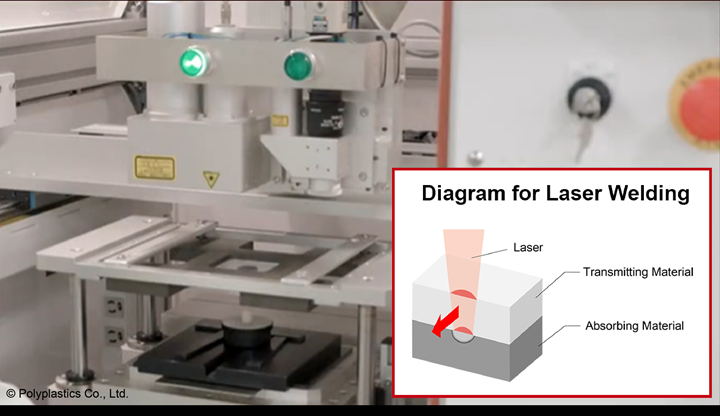PPS Offers Toughness in Laser Welded Applications
Polyplastics’ Durafide PPS 1130A1 is said to offer greater transmittance and toughness and facilitates laser welding in a range of applications

A PPS from Polyplastics Co. Ltd., is finding successful use in laser welded applications such as automotive parts thanks to its enhanced capabilities. Durafide PPS 1130A1 is said to deliver greater transmittance and toughness and facilitates laser welding in a range of applications.
A joining method that offers a long list of advantages, laser welding has been difficult to actually use with PPS due to its low laser transmittance and related mass production issues such as a narrow processing window. Polyplastics’ linear-type Durafide PPS is characterized by its white natural color, as opposed to the reddish-brown natural color of competitive crosslink-type PPS materials. This reportedly gives it superior laser transmissibility (light transmissibility in the infrared region) and makes laser welding possible.
Durafide PPS 1130A1 provides approximately a 6% improvement in laser transmittance which results in a wider processing window for a broad range of welding conditions. The material also delivers an approximately 28% improvement in toughness versus standard grades. This exceptional toughness is important for initial strength and durability. The material has also been shown to offer strong dimensional stability, low warpage, and chemical resistance.
This PPS is said to enable the use of laser welding for production of automotive electric components for which this method could not readily be used before. These parts include electric water pumps, shift actuators, electric-variable valve timing actuators, solenoid valves, and various sensors.
Polyplastics is currently undertaking a development project to provide even better laser transmittance of PPS and further widen the processing window.
Related Content
-
Prices Up for All Volume Resins
First quarter was ending up with upward pricing, primarily due to higher feedstock costs and not supply/demand fundamentals.
-
What's the Allowable Moisture Content in Nylons? It Depends: Part 2
Operating within guidelines from material suppliers can produce levels of polymer degradation. Get around it with better control over either the temperature of the melt or the barrel residence time.
-
Lanxess and DSM Engineering Materials Venture Launched as ‘Envalior’
This new global engineering materials contender combines Lanxess’ high-performance materials business with DSM’s engineering materials business.









